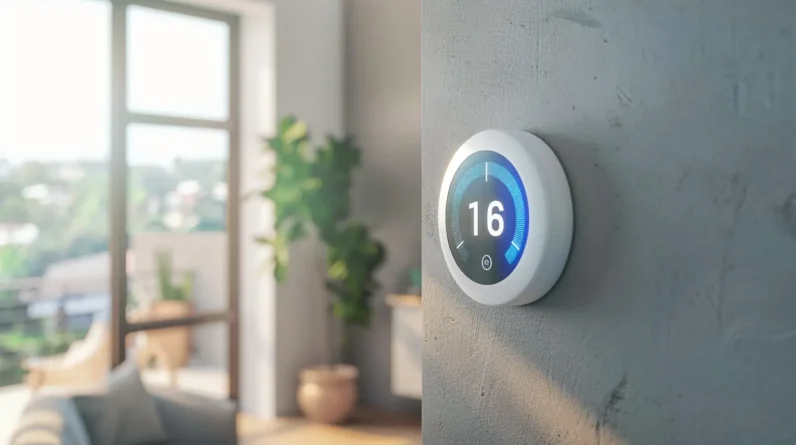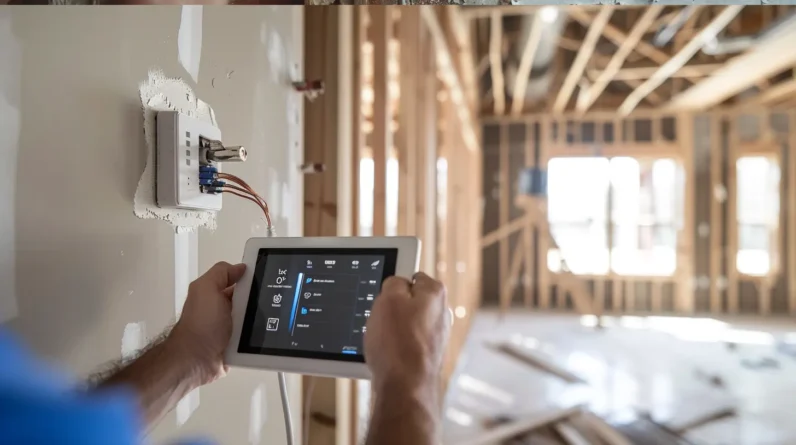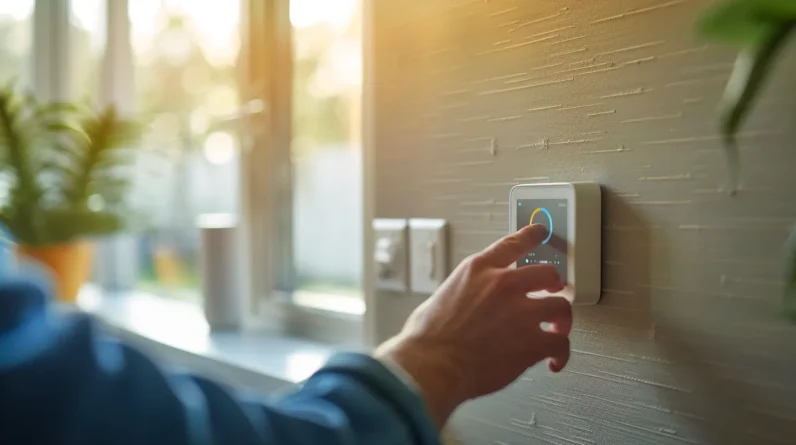
Smart thermostats can reduce our household energy bills by 10-15% through sophisticated technology and automation. We’ll see these savings through features like occupancy detection using motion sensors, machine learning that analyzes our temperature preferences, and real-time weather data integration. The system’s ability to create dynamic scheduling and provide remote monitoring via mobile apps helps eliminate energy waste, while integration with platforms like Google Home and Amazon Alexa enhances control. With an initial investment of $200-300 typically paying for itself within two years, exploring smart thermostat technology reveals substantial opportunities for energy optimization.
Understanding Smart Thermostat Technology
Intelligence in home climate control has evolved significantly with smart thermostat technology. These devices combine sensors, microprocessors, and wireless connectivity to create dynamic temperature management systems. We’re seeing integration of motion detection, humidity monitoring, and multi-zone control capabilities that far surpass traditional programmable thermostats.
At the core, smart thermostats utilize machine learning algorithms to analyze usage patterns and environmental data. They’ll track when we’re home, our preferred temperatures at different times, and seasonal variations in heating and cooling needs. The systems interface with home Wi-Fi networks, enabling remote control through mobile apps and integration with smart home platforms. They process real-time weather data, HVAC system performance metrics, and occupancy patterns to optimize energy consumption while maintaining comfort parameters.
Key Energy-Saving Features
Smart thermostats leverage their advanced technology to deliver specific energy-saving capabilities that reduce consumption by 10-15% on average. We’ll examine the core features that drive these efficiencies through algorithmic learning and automated adjustments.
– Occupancy detection combines motion sensors and geofencing to track when we’re home, automatically adjusting temperatures to optimal comfort levels during occupied periods while reducing HVAC usage when we’re away
– Machine learning analyzes our temperature preferences and daily patterns over time, creating dynamic scheduling that anticipates and implements ideal settings without manual intervention
– Remote temperature monitoring enables real-time tracking of energy use through mobile apps, allowing us to make data-driven decisions about consumption and receive automated alerts when unusual patterns emerge
These intelligent features work in concert to maximize efficiency while maintaining comfort through precise environmental control.
Installation and Setup Process
The installation process for modern smart thermostats follows a systematic approach that typically takes 30-45 minutes to complete. We’ll begin by shutting off power to the HVAC system at the circuit breaker, then remove the old thermostat while labeling each wire according to its terminal designation (R, W, Y, G, C). Next, we’ll mount the new wall plate, connect the labeled wires to their corresponding terminals, and attach the smart thermostat display unit.
Once powered on, we’ll connect the device to our home’s Wi-Fi network and follow the manufacturer’s setup wizard. This includes inputting our HVAC system specifications, establishing preferred temperature schedules, and configuring any advanced features like geofencing or remote sensor integration. We’ll then test the system through a complete heating and cooling cycle to ensure proper functionality.
Cost Benefits and Savings
Energy-saving benefits of smart thermostats translate into substantial cost reductions, with average households reporting 10-15% savings on annual heating and cooling bills. We’ve analyzed data from multiple studies showing that the initial investment of $200-300 typically yields a return within two years through reduced utility expenses. The intelligent scheduling and learning capabilities of these devices optimize HVAC operation to maximize efficiency.
– Advanced occupancy detection can reduce wasted heating/cooling by up to 20% when no one’s home
– Integration with utility demand response programs offers additional rebates of $50-100 annually
– Real-time energy consumption data enables us to identify peak usage periods and adjust settings for maximum savings
These quantifiable benefits demonstrate why smart thermostats have become essential tools for managing household energy costs effectively.
Integration With Smart Home Systems
Seamlessly connecting with other home automation devices, modern smart thermostats serve as central hubs in integrated smart home ecosystems. Through protocols like Wi-Fi, Zigbee, and Z-Wave, we can link our thermostats with smart lights, security systems, and voice assistants for synchronized operations. When we leave home, geo-fencing triggers can simultaneously adjust temperature, activate security, and power down non-essential devices.
We’ll find that popular platforms like Apple HomeKit, Google Home, and Amazon Alexa enable complex automation routines. For instance, we can program our thermostats to coordinate with smart blinds, adjusting both temperature and natural light levels based on time of day and occupancy. Through IFTTT (If This Then That) protocols, we can create custom triggers that respond to weather data, energy prices, or air quality readings.
Conclusion
We’ve seen how smart thermostats hit the nail on the head when it comes to optimizing home energy consumption. Through AI-driven learning, remote access capabilities, and data analytics, these devices reduce energy usage by 10-15% on average. When integrated with IoT platforms, they deliver $140-200 in annual savings. The quantifiable benefits and 2-year ROI make smart thermostats an essential investment for modern energy management.







